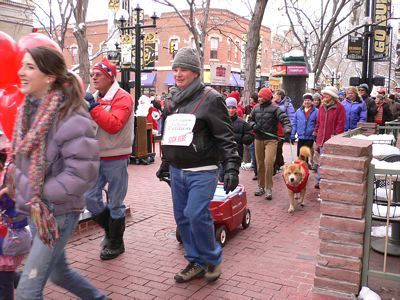No Light Rail in Vancouver!
No Density for Boulder

A Boulder citizens’ group managed to gather more than 9,000 signatures in just 18
days to stop the rezoning of some land to allow high-

Boulder residents march together to present their petition to city hall.
The land at issue is a former elementary school, which was closed due to the declining
number of school children in Boulder — no doubt because most families with children
can’t afford to live there. According to this news story (written before all the
signatures were gathered), the rezoning moved the boundary between an existing high-
Now, I have to wonder: is this a good thing or a bad thing? I would certainly support the neighborhood residents if the city were rezoning their property for higher densities. But moving a boundary by 48 feet so that someone else’s property can have a little more density may be different.
It is likely that none of this would be an issue at all were it not for Boulder’s
unusual land-
The result of these policies is that Boulder has some of the most, if not the most, expensive housing of any U.S. urban area that is not in a coastal state. By now, most of the buildable land in the city must already be developed, so developers naturally will want to put higher densities on the remaining land (such as a former school site).
You can have affordable housing or you can curb sprawl. If you curb sprawl, you can partly mitigate the unaffordable housing by allowing higher densities. But, unless you have so destroyed your economy in some other way that no one wants to live there, you can’t have low densities, greenbelts, and affordable housing all at the same time.
The real solution for these neighbors is to get rid of the greenbelt. This would
take away the demand for high-
So they engage in ballot-
7
Trackback • Posted in News commentary
Reprinted from The Antiplanner